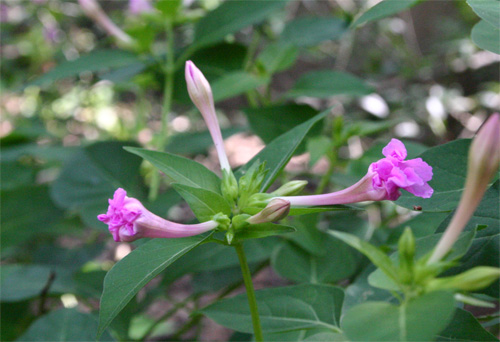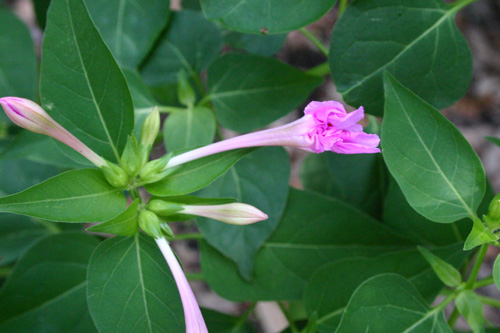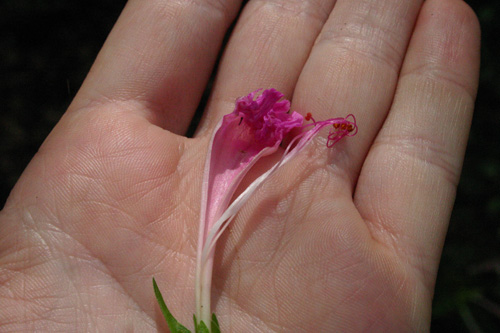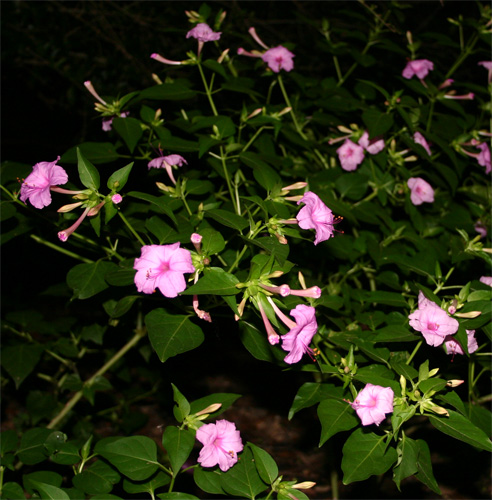I love the rain. Everything just looks so green afterwards.
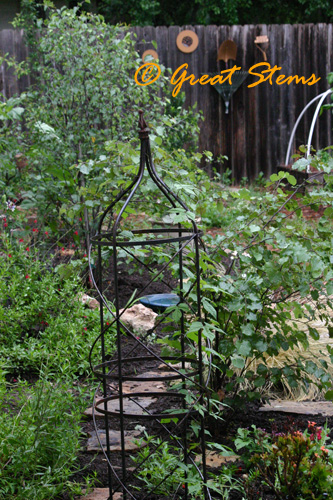
But even without the heavy rainfall this week, which I was so grateful for (by the way Austinites — you can thank me for the rain on Wednesday because it was my watering day and I got up and watered– Murphy’s Law was in full effect, because the rain showed up that evening… now if you got hail, too, that’s not my fault…), this year we are enjoying massive growth of pretty much everything in the garden. I suppose that sounds reasonable, as in the plant world we are in Year 2, at least for some of our plants — the rest are still young. Following the saying “Sleep, Creep, then Leap” — it is clear that our plants are enjoying a growth spurt!
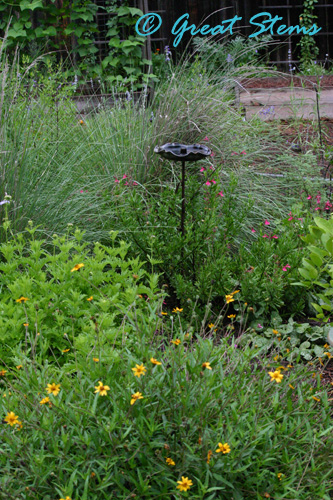 I am envisioning a garden of giants before long — the thought crossed my mind that I might have to trim some of these back at some point. Whoa, that’s too much for this girl to think about right now.
I am envisioning a garden of giants before long — the thought crossed my mind that I might have to trim some of these back at some point. Whoa, that’s too much for this girl to think about right now.
But take a look at this Rock Rose, one that I don’t even remember planting in that spot. It’s massive. Right now I’m just letting it do its thing, but I’m sure that other gardeners are wisely shaking their head, saying that I’m going to be dealing with lots of little Pavonia babies everywhere and soon. (Here’s where I’ll tell you that one of my other Pavonias already made lots of babies, as I discovered a couple of days ago. And it was a much smaller plant!)
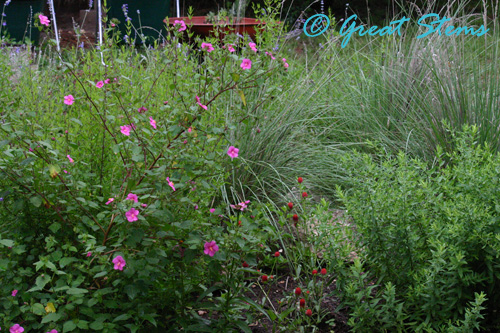
On the plus side, I hope that the natural shade that the larger plants in the butterfly garden will provide this summer will help the smaller ones get through the heat and sun. Downside is that right now everything appears to be the same height. Somewhere in the middle of all that is a Texas Kidneywood, as well as a Barbados Cherry, which at some point should provide the height variation the garden needs. They need to be in their Leap Year, too!
All around the garden, I’ve got new plants I’m excitedly watching. Exotic Love Vine, an annual vine from Mexico and Central/South America, still hasn’t produced any flowers, but I find myself admiring its beautiful leaves everyday. I guess the love effect is already, well, in effect, even without the amazing blooms it hopefully will produce. Maybe they bloom in fall.
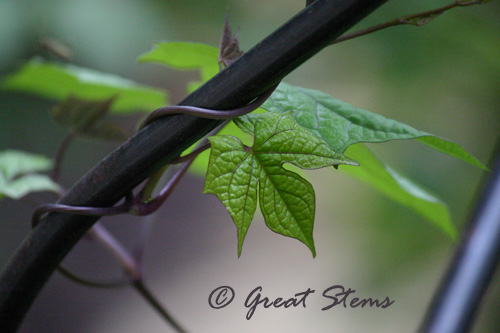
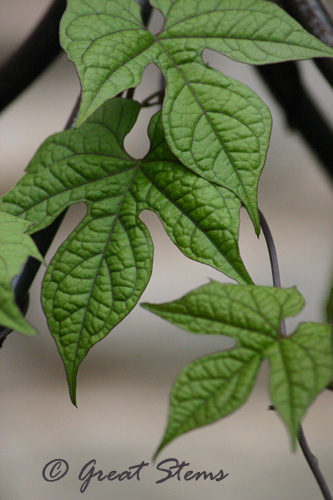 Now check out this great stem — hoho, Great Stem.
Now check out this great stem — hoho, Great Stem.
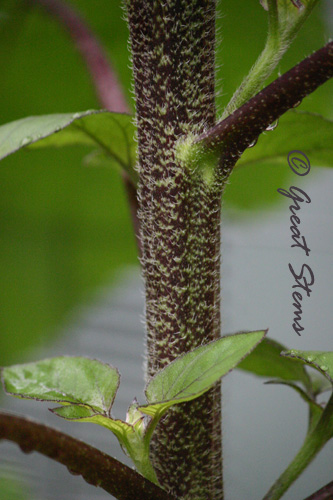 Now at 4-foot tall, this Cinnamon Sunflower is already bigger than some of my trees. Still no evidence of blooms. The leaves themselves are the biggest leaves of any plant I have on the entire property. For comparison, I placed a Pomegranate leaf on one of the Sunflower leaves — I still don’t think it does it justice.
Now at 4-foot tall, this Cinnamon Sunflower is already bigger than some of my trees. Still no evidence of blooms. The leaves themselves are the biggest leaves of any plant I have on the entire property. For comparison, I placed a Pomegranate leaf on one of the Sunflower leaves — I still don’t think it does it justice.
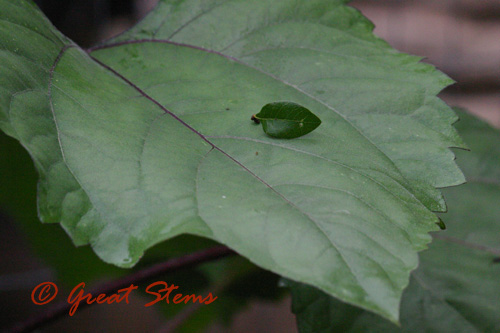 For the record, the Cinnamon Sunflower’s growth is putting the Giant Sunflower’s growth to shame. I haven’t taken pictures of the Giant yet, so it better do some catching up!
For the record, the Cinnamon Sunflower’s growth is putting the Giant Sunflower’s growth to shame. I haven’t taken pictures of the Giant yet, so it better do some catching up!
The Passionflower is blooming like mad. I’m still waiting for the Fritillaries to show up.
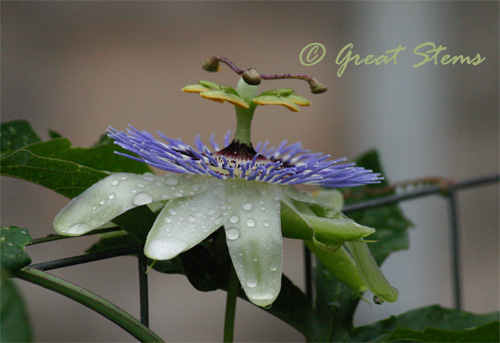
But here’s a little Phaon Crescent come to visit.
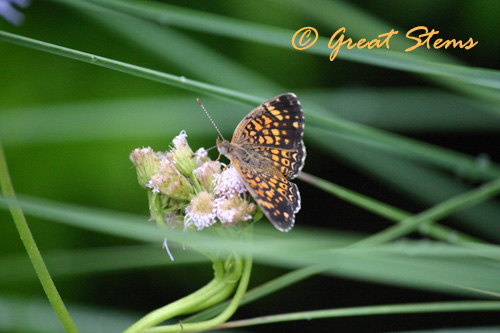
The Purple Coneflowers are doing some strange things this year, but at least they are officially blooming. Some big, some small, some tall, some flat, some wide, some droopy…
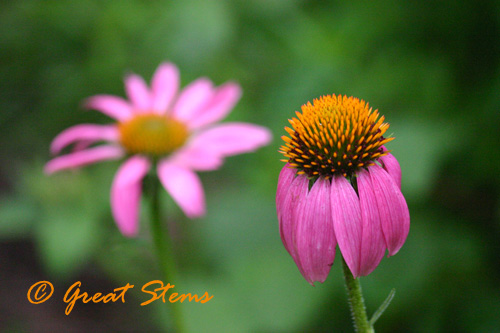 This odd Coneflower has a striped appearance.
This odd Coneflower has a striped appearance.
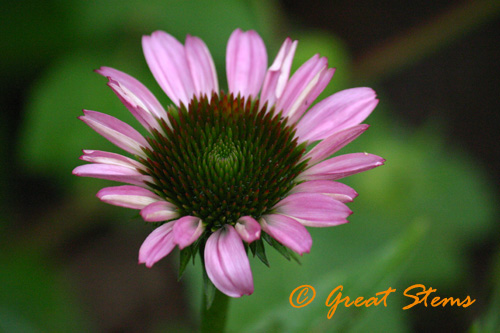 Speaking of Great Stems (giggle), here’s another one. Check out the thorns on this wee tree, a Toothache Tree, or Prickly Ash. The thorns are currently longer than the stem is wide!
Speaking of Great Stems (giggle), here’s another one. Check out the thorns on this wee tree, a Toothache Tree, or Prickly Ash. The thorns are currently longer than the stem is wide!
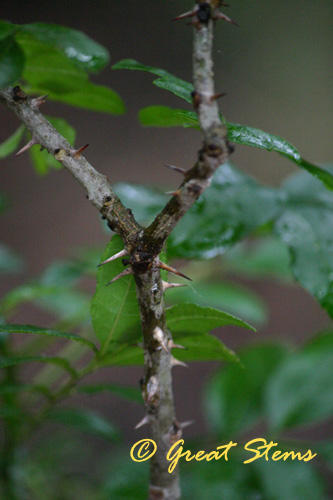 We’re fortunate to have two species growing — Zanthoxylum hirsutum (shown) and Zanthoxylum clava-herculis (very much still a sapling). If you haven’t heard of these trees, they’re fun. Chew on a leaf and your mouth goes numb for a few minutes. Back in the old days, they served to help with toothaches, hence the name. Bonus — a larval host for the Giant Swallowtail butterfly! I look forward to our trees getting bigger.
We’re fortunate to have two species growing — Zanthoxylum hirsutum (shown) and Zanthoxylum clava-herculis (very much still a sapling). If you haven’t heard of these trees, they’re fun. Chew on a leaf and your mouth goes numb for a few minutes. Back in the old days, they served to help with toothaches, hence the name. Bonus — a larval host for the Giant Swallowtail butterfly! I look forward to our trees getting bigger.
Venturing back to the butterfly garden, I paused to admire a strawberry-like annual, the Gomphrena, that I spur of the moment planted a couple of weeks ago. It’s a dwarf compared to the older perennials, but I appreciate the red color that was needed in the garden.
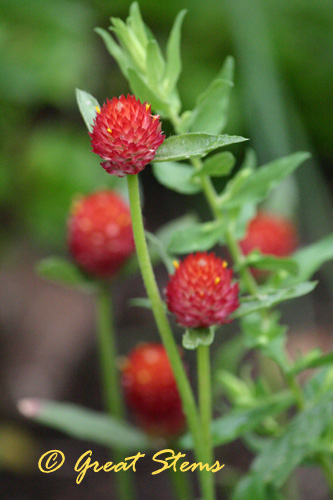
And ugh, a decision to make. This rogue not-native Lantana has popped up in the yard near the pond. Now I have to decide whether to pull it. This is why I stick to the native Lantana urticoides/horrida (Texas Lantana–has orange/yellow/red blooms) — I don’t want to contribute to the easily-spread other kind. I know where it came from, too — my neighbor had one. Had. I notice she pulled it out this year.
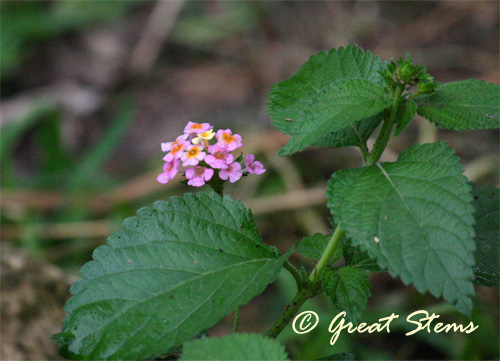
Over in the veggie garden, I discovered an abundance of peppers! Garden Salsa peppers, and they are inspiring the Mexican meal we will have tonight. I didn’t even see them start out as babies, and here they are.
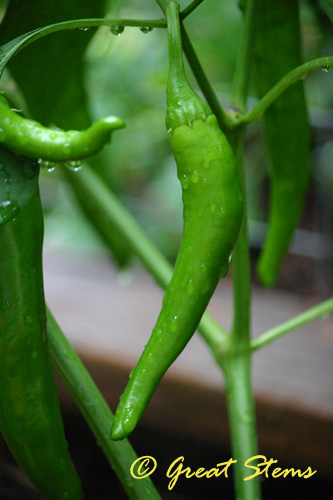
Meanwhile, their leaves are getting munched by these little culprits — tiny (but pretty) grasshoppers. The admiration stops there. They are munching on my peppers, my tomatoes, and my Exotic Love Vine. Stop it, grasshoppers!
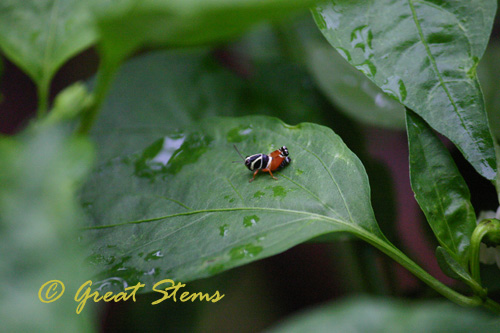 The tomatoes are certainly growing up. They’ve outgrown their cages, keep trying to topple over, and so bushy I’m feeling a little concerned. Next time, I’m going for the big collapsible and way over-priced Texas cages.
The tomatoes are certainly growing up. They’ve outgrown their cages, keep trying to topple over, and so bushy I’m feeling a little concerned. Next time, I’m going for the big collapsible and way over-priced Texas cages.
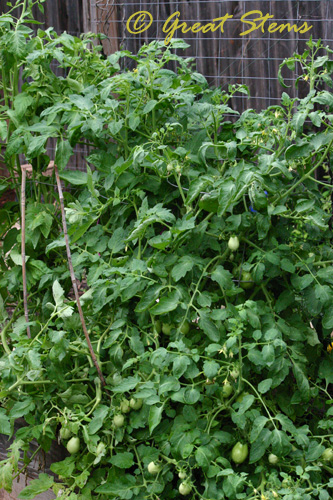 The runner beans have grown up past the trellis. I’m hoping we’ll actually get some beans before the heat of the summer really hits us. I feel we’re pushing the season a bit.
The runner beans have grown up past the trellis. I’m hoping we’ll actually get some beans before the heat of the summer really hits us. I feel we’re pushing the season a bit.
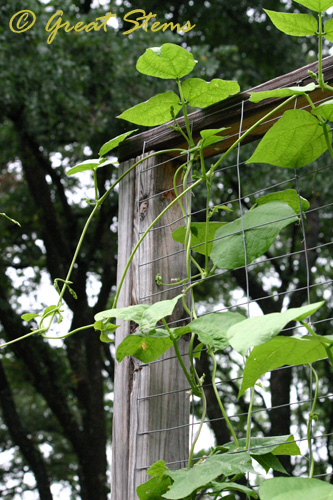 And the perennial Bell Pepper is producing fruit again. I look at this plant in wonder — it survived last year’s terribly hot summer, made it through fall and winter without any attention from me, and here it is, still growing. I didn’t know they could do that. Talk about pushing seasons!
And the perennial Bell Pepper is producing fruit again. I look at this plant in wonder — it survived last year’s terribly hot summer, made it through fall and winter without any attention from me, and here it is, still growing. I didn’t know they could do that. Talk about pushing seasons!
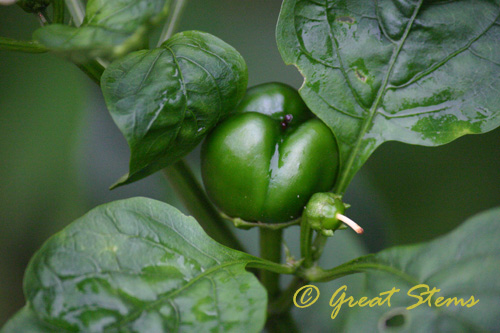 Plants aren’t the only things growing up around here. I’m about to have a teenager in the house (egads). And at 12, he’s already 6-feet tall. We’re going to do a final “kid” measure tomorrow, the day before he turns 13.
Plants aren’t the only things growing up around here. I’m about to have a teenager in the house (egads). And at 12, he’s already 6-feet tall. We’re going to do a final “kid” measure tomorrow, the day before he turns 13.
And these fledgling cardinals showed up this morning. Three of them. I love how their feathers are in transition. Mama and papa should be proud! You can tell my blood sugar was dropping at the time — the camera was shaking! I’d eaten breakfast, but only just. Not enough time to hit the bloodstream, I guess.
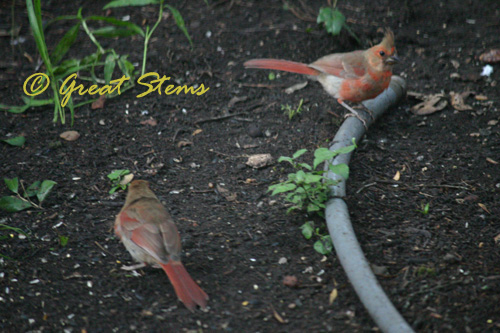
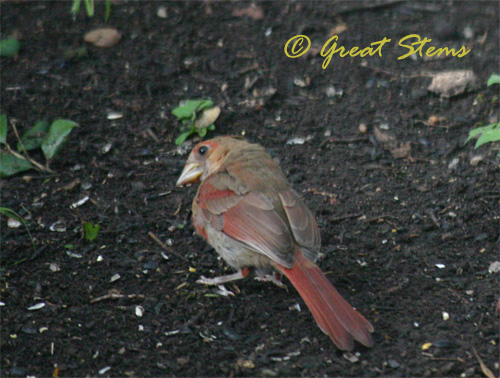
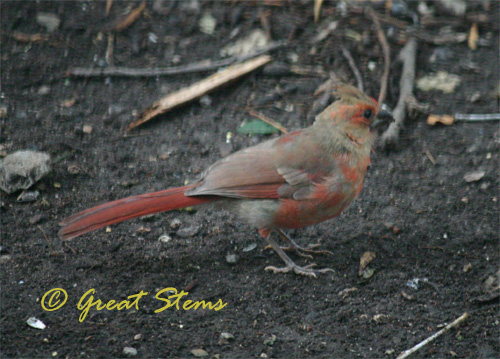 I’m pleased that birds are finally starting to pay attention to the thistle feeder. I abandoned the thistle socks awhile back due to the damage the eager birds were doing — I kept having to replace the feeders. But wow, they did love those socks. It’s not off the project list — I just needed a regular feeder to keep around constantly.
I’m pleased that birds are finally starting to pay attention to the thistle feeder. I abandoned the thistle socks awhile back due to the damage the eager birds were doing — I kept having to replace the feeders. But wow, they did love those socks. It’s not off the project list — I just needed a regular feeder to keep around constantly.
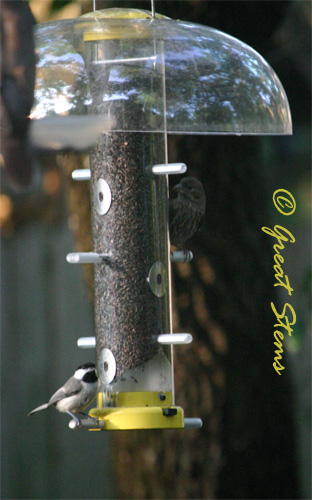 Yeah, I see you squirrel. I know what you’re up to. Yeah, I know you see me, too. And yes, I saw you on the birdfeeder this morning. I noticed the young squirrel nearby, too, watching you do it. Naughty squirrel.
Yeah, I see you squirrel. I know what you’re up to. Yeah, I know you see me, too. And yes, I saw you on the birdfeeder this morning. I noticed the young squirrel nearby, too, watching you do it. Naughty squirrel.
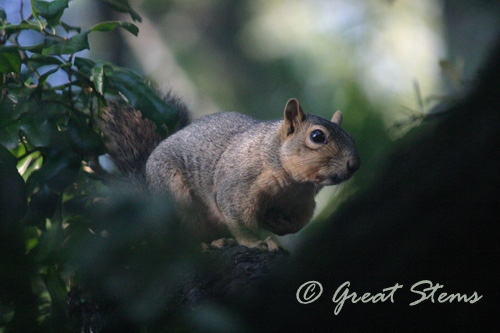
So the organic garden is growing up. The birds are growing up. The squirrels are growing up. My kids are growing up. And I guess the evidence is there that this gardener is growing up, too. If I haven’t already done it, I guess I have to do away with my newbie status officially, my crutch when I don’t know what in the world is going on in my garden. But the greenery around means I must have done something right, newbie or not. If in doubt, add compost — that’s my motto! I’m loving it and ready for more.
For a look back at the garden beginnings through its first year, visit this page.
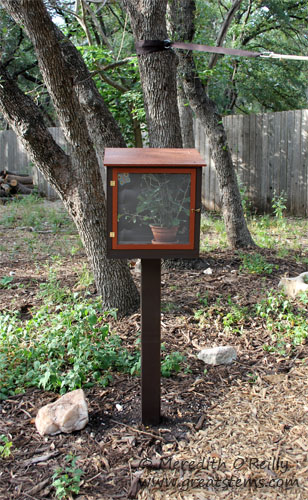 We did complete one of my wish-list projects. For some time, I’d been wanting a more permanent structure for raising caterpillars; with the garden and backyard looking so nice, the caterpillar mesh laundry basket just didn’t cut it anymore. Welcome to our new caterpillar house!
We did complete one of my wish-list projects. For some time, I’d been wanting a more permanent structure for raising caterpillars; with the garden and backyard looking so nice, the caterpillar mesh laundry basket just didn’t cut it anymore. Welcome to our new caterpillar house!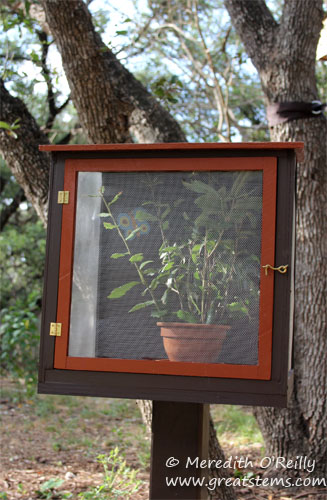 Initially I sketched a basic design, and then Michael built it, using primarily leftover materials from projects of old. We did buy window screen and a latch, so the caterpillar house cost us a whopping $5. For the paint, I used leftover environmentally-friendly exterior paint from when we painted our actual house. The caterpillar house is practically a Mini-Me!
Initially I sketched a basic design, and then Michael built it, using primarily leftover materials from projects of old. We did buy window screen and a latch, so the caterpillar house cost us a whopping $5. For the paint, I used leftover environmentally-friendly exterior paint from when we painted our actual house. The caterpillar house is practically a Mini-Me!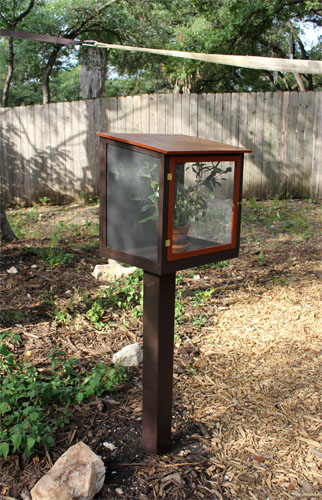 Here’s a side view. The sloping roof is for rain, of course. But it doesn’t keep bird poop off the top! The sturdy post means that I no longer do I have to worry about the dogs knocking over the caterpillar tent. We (and by we, I mean Michael) also dug a 2-foot hole into the ground to make sure that post was going to stay good and stable.
Here’s a side view. The sloping roof is for rain, of course. But it doesn’t keep bird poop off the top! The sturdy post means that I no longer do I have to worry about the dogs knocking over the caterpillar tent. We (and by we, I mean Michael) also dug a 2-foot hole into the ground to make sure that post was going to stay good and stable.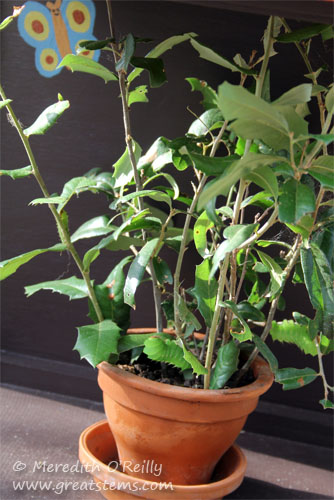 Guess what — the house has proven to be wonderful. Caterpillars inside stay nicely protected from wasps and birds, and a simple pot with moist soil is enough to keep leaves relatively fresh and caterpillars safe from drowning. I’m going to be making an exterior-grade cloth rectangle for the bottom so that I can keep the bottom clean from caterpillar frass.
Guess what — the house has proven to be wonderful. Caterpillars inside stay nicely protected from wasps and birds, and a simple pot with moist soil is enough to keep leaves relatively fresh and caterpillars safe from drowning. I’m going to be making an exterior-grade cloth rectangle for the bottom so that I can keep the bottom clean from caterpillar frass.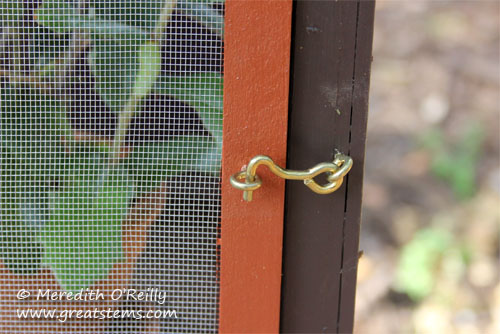 Here’s the little latch. Isn’t it just adorable?
Here’s the little latch. Isn’t it just adorable?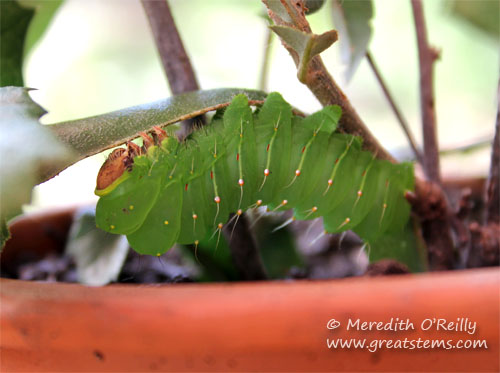 Right now I’m raising Polyphemus moth caterpillars. They are already getting huge.
Right now I’m raising Polyphemus moth caterpillars. They are already getting huge.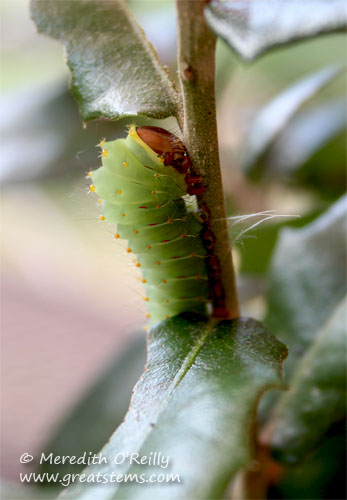
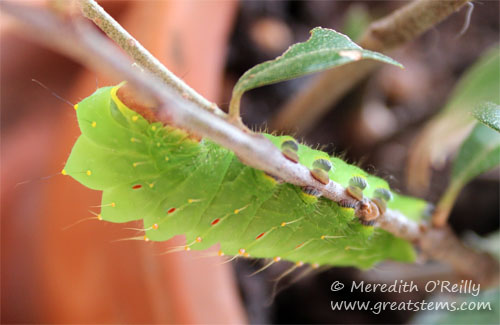
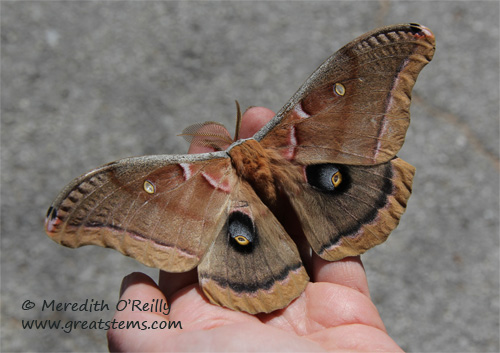 You might recall the Polyphemus moth that joined us for a rather thrilling car ride home in the spring. Here’s one of the photos from that day. Big caterpillar = big moth! Wing span will be about 6 inches across.
You might recall the Polyphemus moth that joined us for a rather thrilling car ride home in the spring. Here’s one of the photos from that day. Big caterpillar = big moth! Wing span will be about 6 inches across. 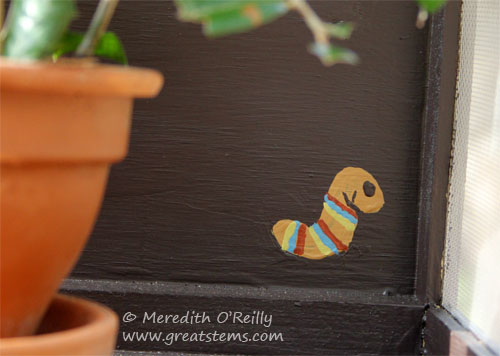
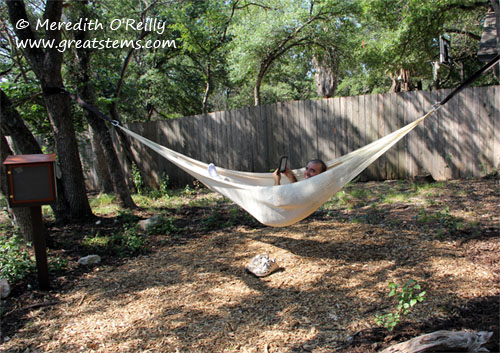 I guess he deserves a rest now and then! The mulch below is the remains of the last invasive plants we’d had on the property, two 50-foot Tree of Heavens. We finally were able to hire an arborist to bring them down, and what a relief that was! It’s been wonderful to get to plant new natives in their place. There — that was another big project we took care of during my blogging absence! More to come!
I guess he deserves a rest now and then! The mulch below is the remains of the last invasive plants we’d had on the property, two 50-foot Tree of Heavens. We finally were able to hire an arborist to bring them down, and what a relief that was! It’s been wonderful to get to plant new natives in their place. There — that was another big project we took care of during my blogging absence! More to come!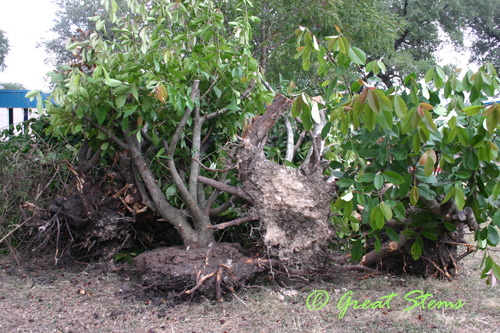 Well, haven’t I been the slacker, not posting anything on Great Stems for a few days? I’ve missed my blog. But I have an excuse. This past week I:
Well, haven’t I been the slacker, not posting anything on Great Stems for a few days? I’ve missed my blog. But I have an excuse. This past week I: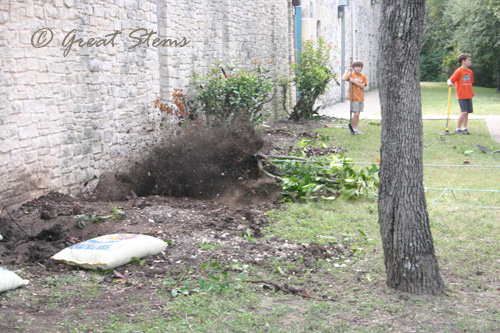
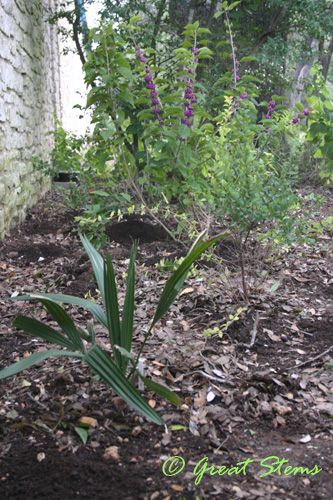
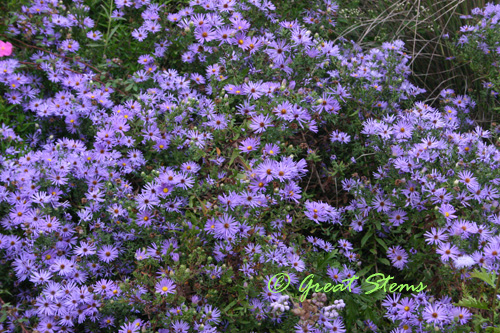
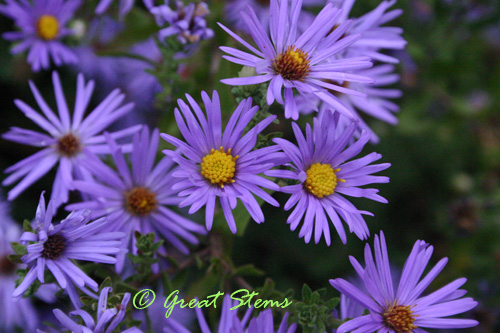
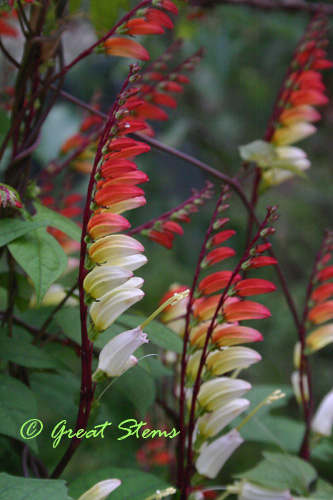
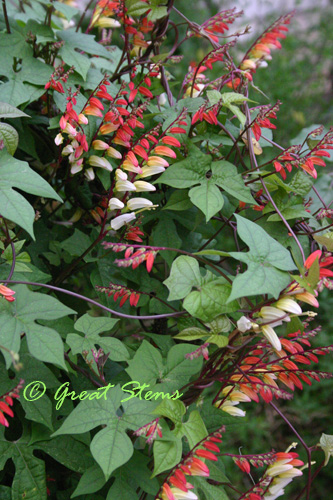
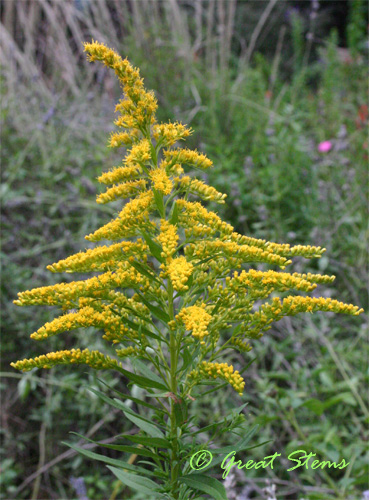
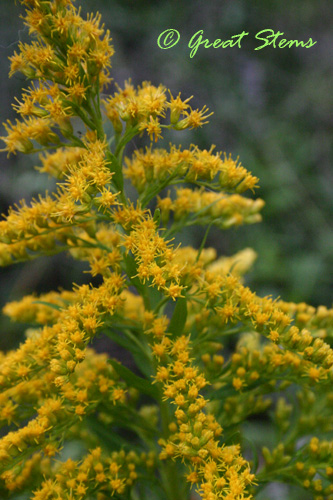

 I am envisioning a garden of giants before long — the thought crossed my mind that I might have to trim some of these back at some point. Whoa, that’s too much for this girl to think about right now.
I am envisioning a garden of giants before long — the thought crossed my mind that I might have to trim some of these back at some point. Whoa, that’s too much for this girl to think about right now.





















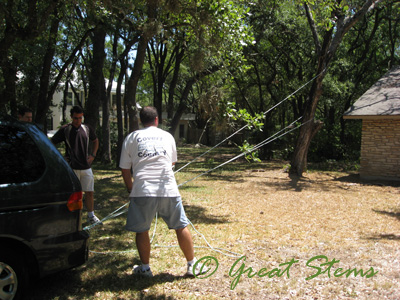
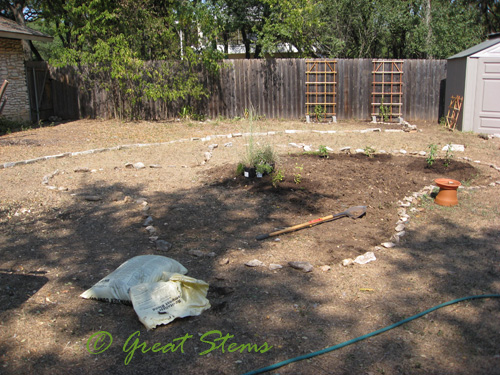
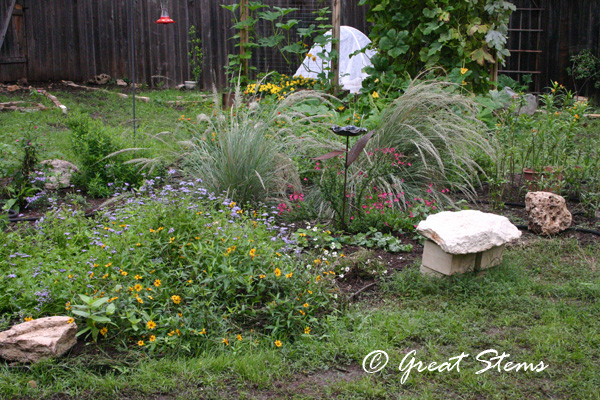
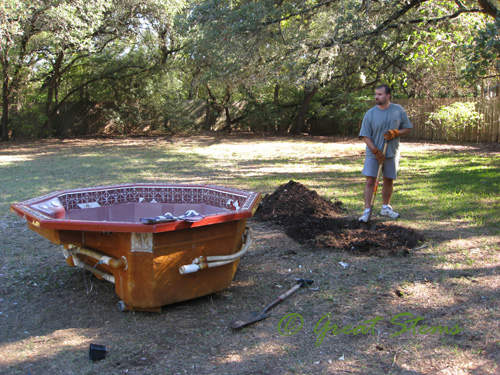


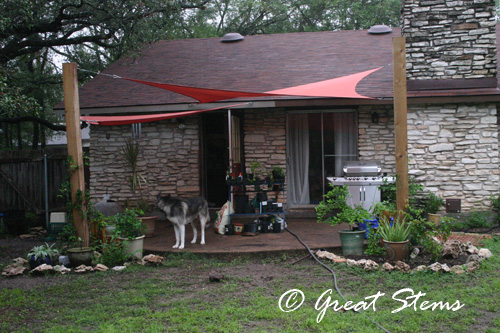
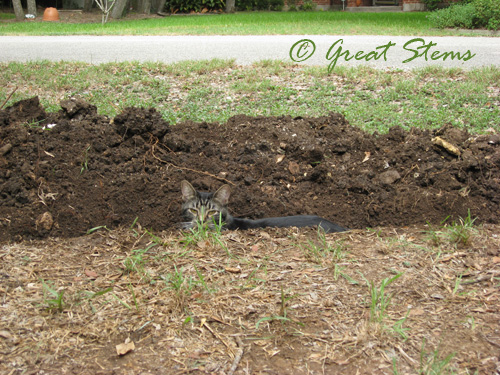
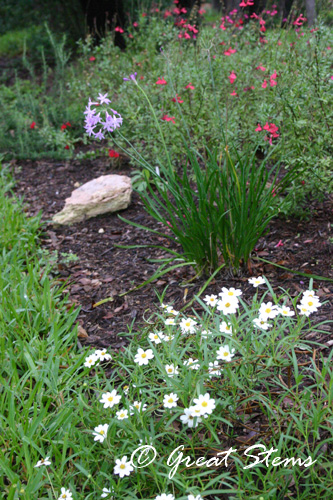 There’s a lot more to our yard than what you see here, and I invite you to
There’s a lot more to our yard than what you see here, and I invite you to 